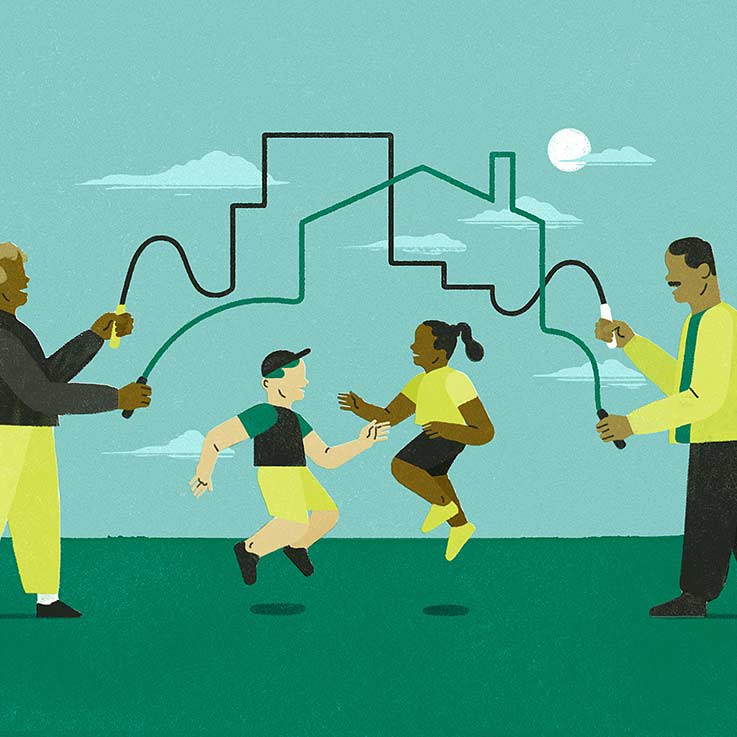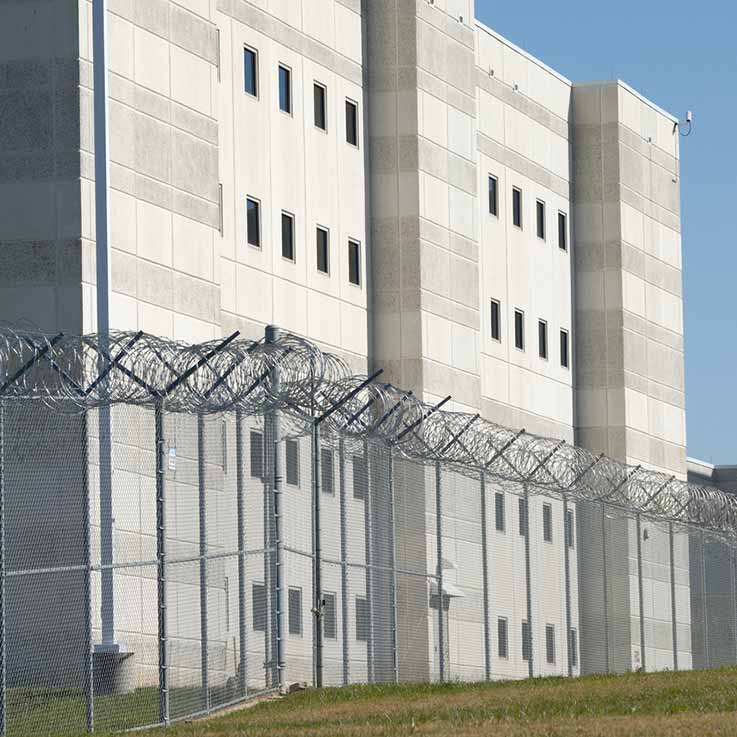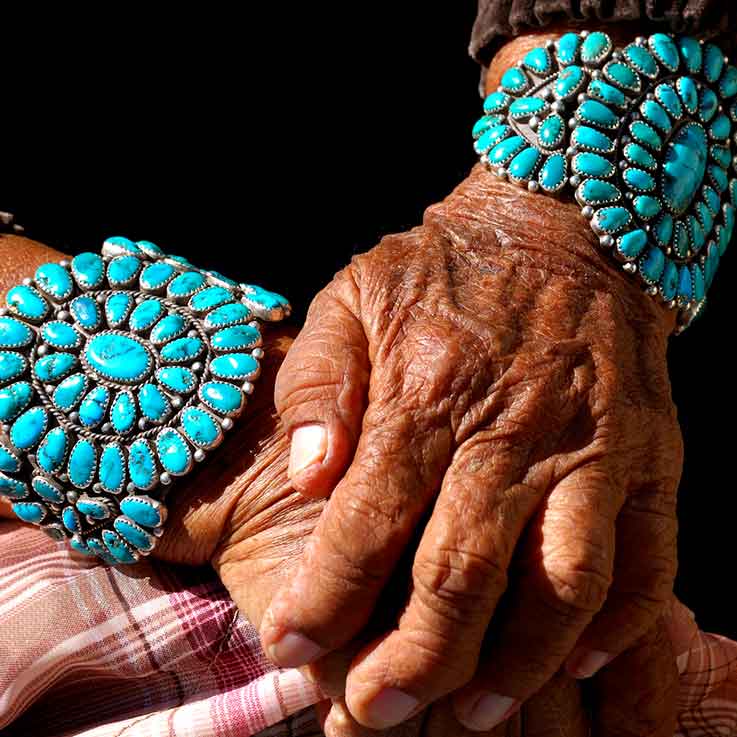
Long-Life Learning and the Age-Integration of Higher Education
Long-Life Learning and the Age-Integration of Higher Education
A look at how colleges and universities can move from age-segregated institutions to age-integrated ones.
By Phyllis Moen & Kate Schaefers Apr. 12, 2021
Universities are among the most age-segregated of institutions, catering almost exclusively to young people in their late teens and early 20s, even as new demographic realities render this educational model obsolete.
With unprecedented numbers of adults living longer, many want or need to learn and earn longer too. A new life stage—an encore to conventional adulthood—is opening up between the career- and family-building years, and the frailties associated with old age. Most people in their 50s, 60s, and 70s are healthy, energetic, and often surprised to be pushed into retirement or laid off with few job prospects. While some want to move into full-time leisure, the vast majority seek new pursuits, whether paid or unpaid, that offer meaning and purpose. But they find few roadmaps and few options for long-life learning at universities.
Meeting the Multigenerational MomentThis essay series, presented in partnership with Encore.org and The Eisner Foundation, explores how fresh thinking and new social arrangements hold the potential to make the most of an increasingly multigenerational society.FOLLOW THIS SERIES
This reality represents a lost opportunity for all parties—older adults and younger ones, universities and society at large. Older and younger adults, both grappling with increasingly ambiguous and uncertain futures, must find their own way without the benefit of each others’ experiences and perspectives. By focusing only on young people, universities pass up a chance to add a new source of revenue, diversify and enrich campus life and learning, and leave a bigger mark on the future. Society, perhaps, loses the most, as younger and older adults represent largely untapped pools of talent that can be marshaled—individually and together—to respond to the social, economic, and environmental shocks characterizing life in the 21st century.
Introducing Multigenerational Initiatives
In 2017, we launched the University of Minnesota Advanced Careers Initiative (UMAC) to help older adults discover new futures, bring the generations together, and reimagine higher education as a welcoming place for people of all ages. UMAC connects multigenerational learning with social impact work, bringing younger and older students together in classes that address issues like inequality, climate change, global health, and social justice. These classes have fostered collaborative, cross-generational relationships that often extend beyond the classroom.
The University of Minnesota is one of a small but growing number of universities that are bringing encore adults to their campuses to help them prepare for engaged, longer lives. Unlike conventional continuing education programs—such as Osher Lifelong Learning Institutes, which offer age-segregated, enrichment courses for retirees—these initiatives intentionally mix their older and younger students in classrooms. They also encourage older students, often known as fellows, to plan second careers in the nonprofit sector or as entrepreneurs.
Harvard’s Advanced Leadership Initiative, launched in 2008, led the way with this model. Its year-long program targets corporate executives with at least 20 years of experience who are ready for their next chapters. These fellows take classes with younger students, attend some seminars together, and develop a plan for “a program, an organization, a foundation” with the potential for “significant impact on a major problem.”
Meanwhile, Stanford’s Distinguished Careers Institute, Notre Dame’s Inspired Leadership Initiative, and The University of Texas’s Tower Fellows Program emphasize exploration, personal growth, and purpose. All attract professionals with distinguished careers seeking a new trajectory for their lives. These programs encourage fellows to take courses in subjects they haven’t studied before or that didn’t exist when they were younger, attend campus events, and share their transition challenges with one another.
Cost represents a major barrier, however, with 2021 program fees starting at $53,000, depending on the program, plus housing expenses. While scholarships are sometimes available, these programs are designed primarily for people of means. By contrast, UMAC’s nine-month program, the first multigenerational university program at a public university, costs $16,000. As growing numbers of people seek encores to their careers, we need to make programs like these more accessible to a broad mix of older adults, including those with modest incomes.
Layers of Learning
In the grand scheme of university life, these programs are all nascent, enrolling relatively small numbers of students and still learning a great deal about what constitutes success. Over the past few years, UMAC has exceeded expectations in some ways and fallen short in others. But the work has shown that universities have a great deal to gain from offering programs that engage older adults in the fabric of higher education.
The lessons we’ve learned can serve as guideposts for those at other colleges and universities who want to begin to move from age-segregated institutions to age-integrated ones.
1. Create an intentional, intergenerational learning community. Connecting learners of different ages in the classroom melds experience and exploration, often with transformative results. At UMAC, a retired neonatologist brought practical insights from his experience with infant care to a global health class. A realtor contemplating next steps gained new understandings of structural inequalities around race and housing, learning from the experiences of younger students in the class. An advertising executive collaborated with students in a community-organizing class to uncover parallels between the lived experiences of people involved in the 1960s civil rights movement and today’s Black Lives Matter movement.
In intergenerational classes, older and younger students share their skills and knowledge, providing reciprocal mentoring and creating strong bonds across generations. The simplistic framing is that older adults offer career expertise, such as interviewing skills and professional networks, while younger students offer technological savvy. But age-integrated classes help create much deeper connections across the generations.
Some encore adults and undergraduates who meet in courses discover they both share a passion for the environment or early learning and decide to collaborate on a class project or meet for discussions outside of class. Others realize that despite their age difference, they’re both grappling with what they want to do with the rest of their lives and can benefit from exchanging advice. And many form long-lasting friendships that challenge age stereotypes.
2. Build on existing infrastructure. Using existing resources and curricula helped integrate UMAC into the overall university community, alerting others to the program’s presence and paving the way for deeper impact across the university.
As an example, we leveraged the university’s Grand Challenge Curriculum, a collection of interdisciplinary classes focusing on contemporary issues. At first, we encouraged a few faculty members teaching these courses to invite UMAC fellows to join the classes. In addition to doing course work, the older fellows served as volunteers, helping undergraduates with projects or professors with research or other administrative tasks. We then approached colleagues in other university centers and institutes to open their doors to UMAC fellows, too, spreading the knowledge and skills older adults bring to a wider audience. A UMAC fellow with a background in investment banking, for example, joined the university’s Venture Center business advisory team, bringing valuable expertise to early-stage startups.
On the flip side, we built UMAC within the Institute for Social Research and Data Innovation, an interdisciplinary research institute. But while aligned from a research perspective, we had to look elsewhere for grounding when it came to spreading the word.
3. Determine funding needs and sources before launch. UMAC intentionally started small and under the radar. By launching as a pilot, we gained the flexibility and time to experiment with program design, learn what worked, and implement best practices. But our unobtrusive launch hindered financial resource development, compared to a bolder unveiling. The result was a skeleton staff with limited bandwidth for internal promotion, external marketing, and recruitment.
We received modest funding from the University of Minnesota’s provost to launch, but the $16,000 fellows pay in fees doesn’t cover ongoing operational costs. At this point, we need to admit at least 40 fellows to be sustainable.
The challenge is to find a way to garner necessary resources while simultaneously having room to try out various approaches. Given our experience, we recommend that new multigenerational learning programs solicit assistance from existing institutes or centers at their universities to contain costs. They should also consider raising as much financial support as possible from leaders, trustees, alumni, or other sources before launching, especially if they plan to keep program costs for participants low. A financial cushion and/or partnership with another institute or center on campus would have given us the opportunity to invest in areas like marketing and recruitment from the beginning.
4. Encourage an ongoing alumni network. Multigenerational university initiatives build age-integrated communities for encore adults at a time in their lives when they're separating from familiar work environments and need new support networks. These new communities foster relationships among older students and between older and younger ones, creating bonds that last beyond time on campus and opening doors for fruitful alumni connections.
Stanford's Distinguished Careers Institute (DCI), for example, invites alumni to return to the campus for periodic visits and alumni gatherings. In 2018, it created the dciX program to promote ongoing connections between current fellows and alumni, while offering a conduit for continued engagement with Stanford University. UMAC fellows also stay connected with each other and with undergraduate students they continue to mentor. Many maintain ties with the nonprofits where they volunteered as part of their fellowship.
A Blueprint for the Future
Younger and older adults, from their late teens to their 80s and beyond, confront two common sets of choices: how to fashion their own futures in a world of ambiguity, hyper-change, and risk, and how to respond to the pressing societal problems of our times.
Universities can help both generations grapple with these choices together instead of on their own. Based on our experience at UMAC, the resulting multigenerational learning is richer for students of all ages and life stages.
Universities have long histories of age segregation, and while innovative ideas for integration abound, they often topple under the weight of established practice, bureaucracy, and institutional inertia. Change eventually occurs, organizational scholars say, when the costs of doing nothing outweigh the costs of change. As leaders of higher education come to recognize the imperative to address urgent societal challenges—including the shift to a world with more people over age 65 than under age 18—that time is now.










